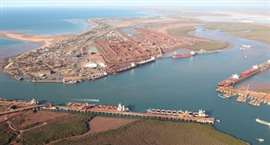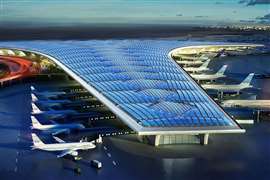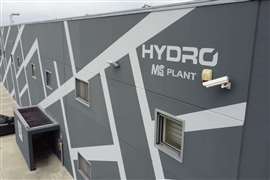Read this article in Français Deutsch Italiano Português Español
Australian LNG plant plans announced
29 November 2023
Electrified plant would produce LNG marine bunker fuel
Australia’s Pilbara Clean Fuels said it wants to develop an electrified LNG plant in the world’s largest iron ore export port.
The mid-scale LNG plant would be located at Port Hedland in Western Australia, and would provide an Australian LNG fuel supply capability through a new facility for the conversion of pipeline natural gas to LNG, responding to market demand for cleaner marine bunker fuel for dry-bulk iron ore carriers operating ‘round-trip’ voyages between the Pilbara and Asia.
The company said market studies show increasing worldwide adoption of LNG as a marine fuel, with supply availability one of the key drivers. The base-case plant capacity is 0.5 Mtpa, with market analysis for Port Hedland alone (not counting other major Pilbara ports) indicating potential demand of 1.0 Mtpa by 2030.
A key feature of the project is an electrified plant with outsourced power supplied predominantly from renewable sources. The design intent is to significantly reduce Scope 1 and Scope 2 emissions compared to conventional LNG plants.
The LNG re-fuelling concept is based on ship-to-ship bunkering of vessels while at anchor off Port Hedland.
 Port Hedland Iron Ore export facilities in Australia. • Pilbara Clean Fuels (PCF) is pursuing the development of an electrified liquefied natural gas plant in the port for the production of LNG marine bunker fuel. (Image: Pilbara Clean Fuels)
Port Hedland Iron Ore export facilities in Australia. • Pilbara Clean Fuels (PCF) is pursuing the development of an electrified liquefied natural gas plant in the port for the production of LNG marine bunker fuel. (Image: Pilbara Clean Fuels)
Oceania Marine Energy Pty Ltd is developing a LNG marine fuel bunkering service capability based on the charter, ship management and operation of purpose-designed LNG bunker vessels. The vessels are to be provided by Norwegian ship-owner Kanfer Shipping.
RINA is developing a concept for a new 209,000 DWT Newcastlemax dry-bulk ship design with an LNG marine fuel system involving pre-combustion carbon removal and hydrogen production, with the objective of meeting and exceeding IMO 2050 emissions reduction marine vessel Carbon Intensity Index (‘CII’) objectives.
The RINA fuel system concept involves the capture, onboard storage and offloading of liquefied carbon dioxide or solid carbon at loading or discharge ports for onshore handling, monetization or disposal..
By solving the historic criticism of LNG as being only a ‘transition fuel’, rather than having a long-term future as a ‘zero emissions’ fuel, this solution is likely to be welcomed by the marine engineering community due to the extensive maritime operational experience of LNG and its known safe handling characteristics, the company said.
The Pilbara to Asia dry-bulk trade route is particularly suited for early adoption of the pre-combustion carbon removal and hydrogen production onboard concept due to proposed availability of low carbon intensity LNG bunkering at Port Hedland, along with an ability for offloading carbon dioxide or solid carbon and a variety of monetisation or disposal options.
Recognising the complementary aspects of their respective project interests and business objectives, PCF, Oceania and RINA have entered into a Memorandum of Understanding (“MoU”). Under the terms of the MoU, PCF, Oceania and RINA have agreed to collaborate to develop an ‘end-to-end’ low-carbon profile LNG production and marine vessel bunkering capability concept for the port of Port Hedland. Furthermore, RINA’s 209,000 DWT Newcastlemax dry-bulk vessel design and fuel system design concept provides a path to ‘zero emissions’ for the adoption of LNG as a marine fuel on a 2050 timeframe.
POWER SOURCING GUIDE
The trusted reference and buyer’s guide for 83 years
The original “desktop search engine,” guiding nearly 10,000 users in more than 90 countries it is the primary reference for specifications and details on all the components that go into engine systems.
Visit Now
STAY CONNECTED




Receive the information you need when you need it through our world-leading magazines, newsletters and daily briefings.
CONNECT WITH THE TEAM













